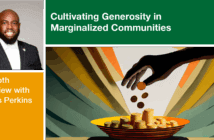More than ten years ago, I was introduced to “paperless giving” as a way to receive the offering in worship. A specified amount of money would be automatically transferred from my bank account to the church account each month. A friend of mine knew a company that would arrange this for any congregation (for a fee). I immediately resisted the idea on the basis of “fee for service.” But I also resisted for theological reasons. I have always understood the offering to be a personal faith response — usually expressed in worship — to the goodness of God, to God’s astounding grace and love. Some physical act (putting an envelope in the plate) visibly demonstrates that response.
We need to keep pace with what is happening in the financial sector of our society and bring a faithful and meaningful interpretation to the offering in a new day.
Once in a message I said: “I do not like the idea of electronic giving, and I hope such a practice does not happen in my ministry lifetime.” Afterwards, my financial secretary took me aside. “Be careful,” she said. “You obviously do not know how many members already do this, especially some of our biggest givers!”
Since then, my position on electronic giving has shifted. We are moving toward a paperless economy. Cash and even check writing are becoming passé. The growth of debit and credit cards and electronic banking is changing the way we handle finances. I pay many bills electronically and write few checks.
And I now pay my own tithe electronically at least some of the time. As a retiree, if I worship in my “home church,” I usually take a check for the offering. If I am worshipping or preaching elsewhere, I place something in the offering at that church, but send my tithe to the “home church” electronically.
The church needs to keep pace with widely-used technology and connect technological changes to the meaning and practice of worship. We ought to do this with some intentionality if we hope to reach and connect with younger generations. What will the offering mean to a new generation of Christians?
I am still thinking through the theological implications of this. I am glad that churches using automatic giving usually provide cards or envelopes for people to place in the offering plate as a symbol of their electronic gift. Giving remains your faith response to the goodness of God in your life. Somehow, we need to keep pace with what is happening in the financial sector of our society and bring a faithful and meaningful interpretation to the offering in a new day.






